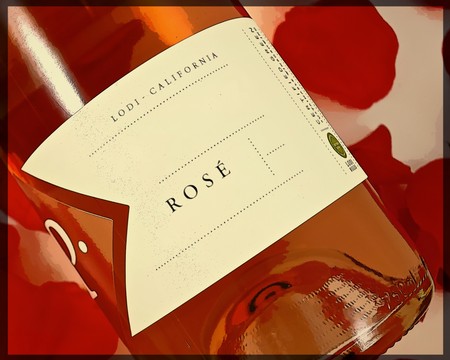Letters from Lodi
An insightful and objective look at viticulture and winemaking from the Lodi
Appellation and the growers and vintners behind these crafts. Told from the
perspective of multi-award winning wine journalist, Randy Caparoso.
A summary of the full range of Lodi dry rosés, by grape variety and brands
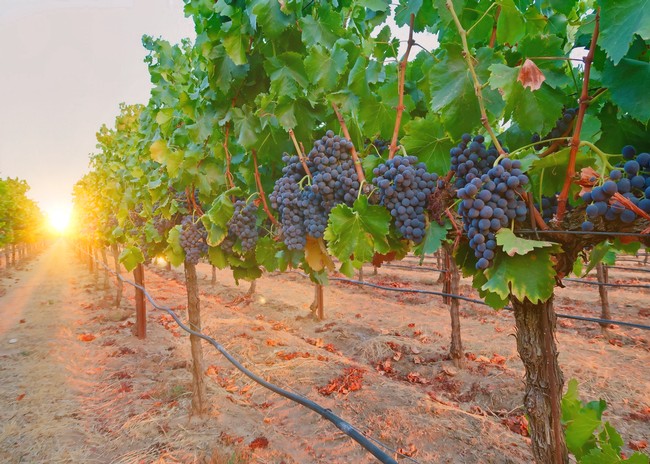
Mokelumne River-Lodi appellation Grenache—the black-skinned grape most commonly used for dry style rosés—in the early morning light.
So far the summer of 2024 has been... let's just say, ugh. A little hot.
Besides well-chilled whites or sparklers, the perfect wines for weather like this are refreshingly dry rosés, which are made by more wineries than ever because this style of wine is, simply, more popular than ever.
Lodi produces such a wide range of dry rosés, that a wine lover could, theoretically, enjoy a new bottle of Lodi rosé every day of the week for an entire month, yet never consume the same brand or bottling twice.
And all of them taste exactly like a perfectly good dry rosé should: Light, easy drink, not too fruity in the aroma (overly fruity rosés can be annoying), and just tart enough in natural acidity to prickle the palate, soothe the soul and freshen the disposition.
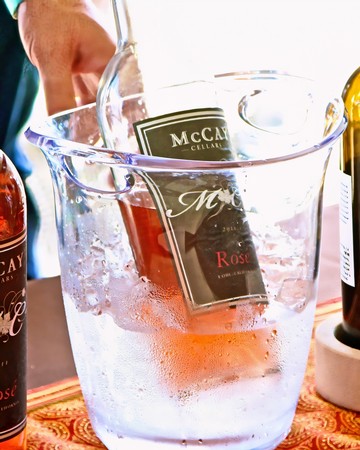
In the hottest days of summer, a pause that refreshes.
The first reason there is such a wide range of rosés produced in Lodi is because of the region's grape-friendly Mediterranean climate, highly conducive to grape varieties producing high-quality rosés. The second reason is economics: Lodi grows a wider range of black-skinned grapes than other regions because it is more economically feasible for growers in Lodi to do so.
Take, for instance, the current average cost of farming wine grapes in Napa Valley or Sonoma County, which is somewhere between $4,000 and $10,000 per acre. In Lodi, the cost per acre is somewhere between $1,800 and, at the most, $4,000.
Consequently, coastal California regions⏤that is, anywhere between Mendocino and Santa Barbara⏤are compelled to focus primarily on grapes commanding higher prices per ton, going into higher-priced varietals such as Cabernet Sauvignon, Pinot Noir, or Chardonnay.
The way wine industry economics generally work in the U.S. is this: The price per ton of grapes usually ends up being roughly 100 times the price of a bottle sold at retail. Therefore, a winery paying $8,000 or $10,000 for a ton of Cabernet Sauvignon or Pinot Noir produces wines selling in the range of $80 to $100.
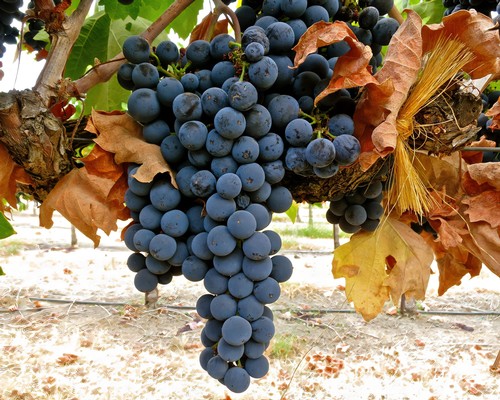
Close-up of Primitivo—a clonal variant of Zinfandel now often used for dry rosé production—in Lodi's Mokelumne River appellation.
But here's the thing: Even the most hoity-toity wine lover is never going to spend more than $25 or $35 for a bottle of rosé, no matter what region it comes from, or how prestigious the brand is. Ergo, rosé production is something much more in the wheelhouse of a region like Lodi, as opposed to Napa Valley or Sonoma where grape prices are much higher.
In Lodi, as it were, growers cultivate more or as much Cabernet Sauvignon, Pinot noir, or Chardonnay as any other region, but also a myriad of other grapes. Citing those often used for rosé production: Zinfandel, Grenache, Syrah, Mourvèdre, Cinsault, Carignan, Petite Sirah, Tempranillo, Graciano, Sangiovese, Nero d'Avola, Aglianico, Barbera, and so forth.
Not coincidentally, many of these same grapes originated in countries encircling the Mediterranean Basin, where a large percentage of red wine grapes are traditionally used for rosé production. For the most part, these grapes have long been adapted⏤going back hundreds, if not thousands, of years⏤to grow in warm to extremely hot climates, yet produce wines retaining lots of natural acidity and fresh fruit qualities. Perfect for rosé!

Lodi is easily the largest winegrowing region in the U.S. precisely because it supplies grapes going into wines selling for $5 to $25, or $35 tops, which are the wines that the vast majority of American consumers actually drink. The higher-cost coastal regions, on the other hand, are forced to focus mainly on grapes going into wines selling for $25 at the least, closer to $35-$45 on average, and as much as $100 or $200.
It is not, mind you, that you can't grow a wide range of grapes in other California regions, which enjoy a Mediterranean climate similar to Lodi's. It's just that there are a lot more of these grapes growing in Lodi, which accounts for the reason why there is such a wide range of rosés currently being produced in the appellation.
Defining Lodi's diversity of rosés by grape variety and brand
What is the difference between a rosé made from, say, Cabernet Sauvignon or Pinot noir as opposed to rosés made from Grenache, Cinsaut, Zinfandel, Aglianico, Barbera or any other grape variety? Aromatically, not a whole lot.
For the most part, no matter what grapes they are made from, rosés tend to express "red fruit" qualities in the nose⏤suggesting fruits such as cherry, raspberry, strawberry, watermelon, cranberry, and so forth.
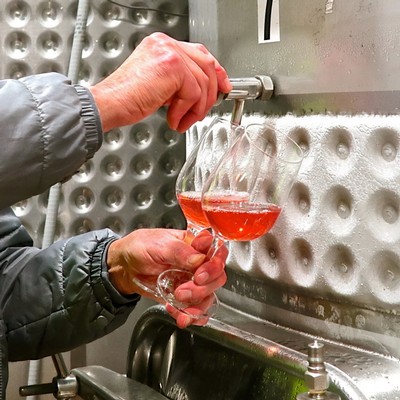
Sampling Lodi-grown rosé directly from the fermentation tank.
The reason for this is the way rosés are typically made: When grapes are brought into the winery their juices are immediately pressed from the berries so that little or almost no color is extracted from the skins (red wines, by way of contrast, are fermented with skins and seeds entirely intact, which is what gives reds their deep color and tannin content). Because most of the compounds that give black-skinned grapes their distinctive aromatic profiles are contained in the skin, most rosés do not retain a lot of "varietal character." They smell mostly like, well, "red fruit."
You can, however, enjoy some of the qualities distinguishing individual grape varieties going into rosés on the palate, especially in terms of body (i.e., the weight of a wine) and acidity (levels of tartness). For instance, rosés made from grapes known to have higher natural acidity (such as Barbera, Carignan, Sangiovese, or Aglianico) can definitely have more of a tart, zesty edge of acidity than rosés known for rounder or softer levels of acidity (Grenache, Cinsaut, Mourvèdre or Tempranillo).
Not too long ago, many wine lovers well remember, one of the biggest selling wines in America was White Zinfandel, a misnomer because these wines were typically pink colored⏤for all intents and purposes, a rosé⏤yet significantly fruitier tasting than dry style rosés because of their higher amounts of residual sugar. Of course, it was always possible to produce a bone-dry style of White Zinfandel, but why would any California winery do that when 99.99% of White Zinfandel lovers expected a medium-sweet wine?
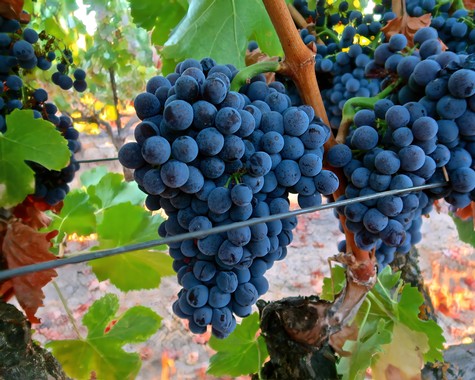
Close-up of Grenache—the workhorse rosé production grape in Southern France, California, and elsewhere around the world—in Lodi's Mettler Family Vineyards.
Because Lodi does grow lots and lots of Zinfandel (over 40% of California's annual production), as you would expect, a lot of that Zinfandel is now going into dry rosé. Excellent quality rosé, as a matter of fact, because of the grape's natural proclivity to retain bright acidity and exuberant fruit profiles. The difference, though, is these Zinfandel-based pink wines are not labeled "White Zinfandel." They're bottled as "rosé."
That said, a run-down of the numerous Lodi-grown rosé, divided by their predominant grape content:
Grenache (as a varietal labeled rosé)
• Look for bright strawberry/cherry aromas, generally a round and fleshy texture, and slight minerality in flavors couched in light-medium-bodied qualities on the palate.
• Key producers: Acquiesce Winery; McCay Cellars; Oak Farm; Heritage Oak; Lucid Wines; Jeremy Wine Co.
Grenache (as the key component in blends)
• When Grenache is used in a blend⏤most of the time (not always) with other Southern French grapes such as Cinsaut, Carignan, Syrah, and Mourvèdre⏤its medium-bodied, strawberry/cherry fruit profile is usually given a firmer textured phenolic content than in 100% Grenache rosés, often with enhanced acidity with an almost chubby quality to its roundness on the palate.
• Key producers: Bokisch Vineyards "Rosado" (Grenache with Tempranillo and/or Graciano); Klinker Brick Winery (Grenache, Carignan, Syrah, Mourvèdre); Mettler Family (Grenache, Syrah, Mourvèdre); Mikami Vineyards (Grenache, Syrah, Mourvèdre); Oak Farm (Grenache, Syrah, Zinfandel, Malbec); PRIE Winery "Eleanora" (Grenache, Mourvèdre); JSL Wines (Grenache, Mourvèdre, Carignan, Cinsaut); La Belle Nue (Grenache, Syrah, Mourvèdre, Carignan); Seis Soles Wine Co. (Grenache, Mourvèdre); McCay "Reserve" (Grenache, Cinsaut).
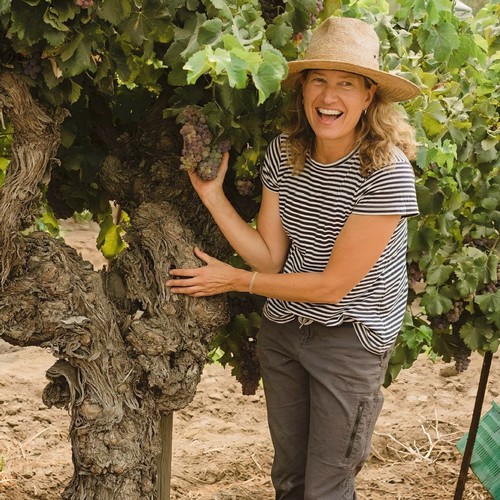
Lorenza owner/winemaker Melinda Kearney with ancient vine Lodi Cinsaut (planted in 1886), utilized in her rosé blends. Lorenza Wine.
Cinsaut
• Largely because of the presence of the historic 25-acre Bechthold Vineyard—Cinsaut planted in 1886—Lodi has become well known for dry rosés made from this Southern French grape which produces exceptionally round, gentle, fruit-forward (strawberry, cherry, rhubarb, cranberry-like) styles of wines that are moderate in acidity yet have a svelte, flowing, often mineral or earth-toned character.
• Key producers: McCay Cellars; Michael David Winery; Onesta Wines; Estate Crush; Jessie's Grove; Ser Winery; BIRICHINO; Ernest Vineyards "Eugenia"
Mourvèdre (as the key component in blends)
• Mourvèdre is a classic Southern French grape which, when dominant in a rosé blend, usually produces a style with mineral-toned red fruit quality and a medium body with more of a flowing, typically fleshy texture on the palate, yet invariably long, sleek, fresh.
• Key producers: Lorenza Wine (Mourvèdre, Carignan, Cinsaut, Grenache); PRIE Winery (Mourvèdre, Grenache, Counoise); McCay "Cellar Reserve" (Mourvèdre, Grenache)
Carignan (as a varietal or key component in blends)
• Because most Carignan vineyards in Lodi consist of very old vines (closer to 75 to 100 years), you find more reds than rosés made from this classic Mediterranean grape; but when produced into a rosé, it is crisp (the grape is prized for its natural acidity) and beautifully scented with red fruit (cherry, raspberry), while transparent (i.e., tasting "of the place") with mildly earthy or minerally tones.
• Key producers: McCay Cellars; PRIE Winery; Jessie's Grove; Rippey Family (Carignan, Mourvèdre, Grenache, Cinsaut); Macchia "Ridiculous" (Carignan, Grenache, Mourvèdre, Cinsaut)
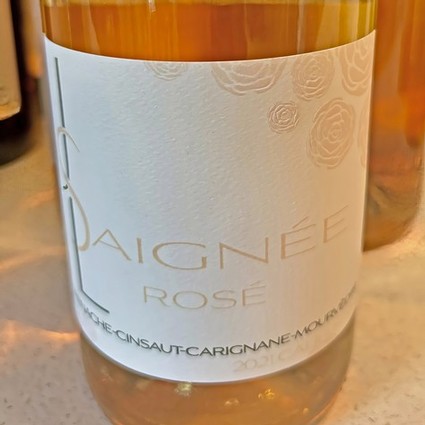
Close-up of the label for JSL Rosé—one of Lodi's brightest new brands—spelling out its classic blend of Southern French grapes (Grenache, Cinsault, Carignan, and Mourvèdre).
Syrah (as the key component in blends)
• Although not typically used as a dominant grape in a rosé blend, this variety is a natural in the Lodi appellation because of its Mediterranean lineage, producing light-medium bodied dry styles with a strawberry fragrance and a natural, citrusy zestiness.
• Key producers: Michael David (Syrah, Cabernet Franc, Merlot); Heritage Oak
Tempranillo
• When vinified into a dry rosé, this native Spanish grape exudes strawberry-like fruit with a leafy herbiness and soft yet modestly crisp qualities suggesting strawberry, rhubarb, and/or cherry.
• Key producer: Heritage Oak
Barbera
• Barbera is a classic Northern Italian grape best known for one specific sensory quality: It produces red wines with the highest amount of acidity (i.e., a tart, sometimes even sharp, taste) of any other red wine grape known to man. This translates into dry rosés with a refreshing degree of tartness to go along with fragrant red berry perfumes.
• Key producers: St. Amant Winery; Christopher Cellars; Heritage Oak; d'Art Wines ("White Barbera")
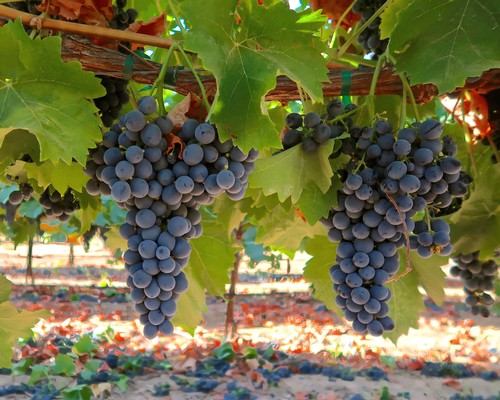
Nero d'Avola in Lodi's LangeTwins Vineyards; is a native Sicilian grape that produces zesty, grippy styles of dry rosé.
Nero d'Avola
• The number of excellent varietal rosés imported from Sicily, the grape's region of origin, lends credence to the wisdom of producing dry pink wine from this grape in Lodi, where it results in a wine that is zesty in natural acidity while light and graceful on the palate, exuding red fruit (strawberry, cherry, pomegranate, red currant) couched in a slightly grippy palate feel.
• Key producer: LangeTwins Family Winery
Sangiovese
• This Tuscan, Italian grape is tailor-made for rosé because of the grape's naturally pointed acidity, producing light and palate-freshening styles with aromas suggesting strawberry, leafy green rose petal, and cherry-scented tea.
• Key producers: Sand Point; Karen Birmingham; Scotto Family Cellars
Aglianico
• Another ancient (cultivated since Roman Empire days) black-skinned Italian grape known for a high level of natural acidity, which produces refreshingly crisp and airy fresh dry rosés with a more floral scent than more conventional rosé grapes (such as Grenache), tinged with strawberry, violet, lush melon and red licorice
• Key producer: LangeTwins Family
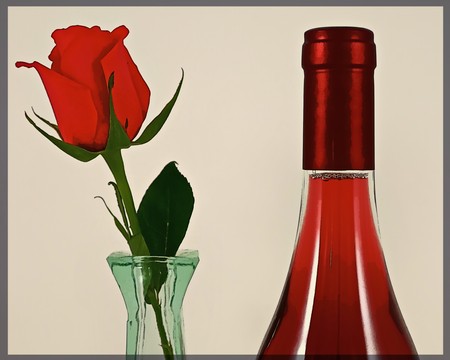
Zinfandel
• While medium-sweet White Zinfandel is not nearly as popular as it was 25 years ago, the grape retains its signature fresh, lush watermelon/cherry aroma when utilized for dry style rosés; its consistently zesty, occasionally grapefruity natural acidity accentuates the varietal fruit's freshness in medium to moderately full-bodied wines.
• Key producers: Harney Lane Winery (varietal not notated on the label); Turley Wine Cellars; Peltier Winery "ZANTE"; Mikami Vineyards; OZV; Stama Winery; KMS Collection (by Stonum Vineyards); Monte Rio Cellars; Jeremy Wine Co.
Zinfandel (as the key component in a blend)
• Even when blended with other grapes, Zinfandel as a varietal defines the fruit profile (watermelon, strawberry, raspberry) and refreshing, zesty quality of dry rosés made primarily from the variety.
• Key producer: m2 Wines (Zinfandel, Carignan)
Pinot noir
• Pinot noir makes such fantastic rosé, it's a shame it's rarely used as such in Lodi and elsewhere on the West Coast, producing a style that is invariably sleek, graceful, red fruit and rose petal scented, crisp, light, long and refreshing.
• Key producers: Peltier Winery; Rescue Dog Wines
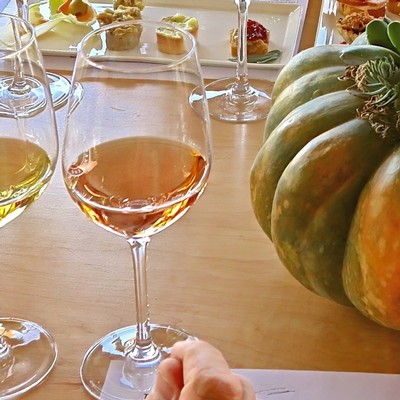
Cabernet Sauvignon
• Like Pinot Noir, Cabernet Sauvignon is sorely under-utilized as a rosé because this variety produces some of the most pungent (billowing minty red berry, cherry, or strawberry aromas), full-bodied yet fleshy and well-rounded styles of pink wine imaginable. More Cabernet rosé please!
• Key producer: Peltier Winery
Flame Tokay
• This now rare, vividly pink-colored heirloom grape, planted in Lodi primarily as a table grape between the 1880s and 1980s, produces a soft textured, appealingly fleshy, gentle pink wine, yet one that can retain mildly crisp acidity and aromas suggesting fresh peach and rose petal.
• Key producer: Sabelli-Frisch "Lanterna"
Mission
• There is not much of this historic grape (between the late 1700s and 1850 Mission was the only variety cultivated in California) in Lodi or anywhere else in the Golden State, but it is one that shows its varietal character when crafted into a dry rosé—herby kitchen spiciness tinging cherry, raspberry, Jolly Rancher-like watermelon perfumes, and a light-medium body perked up by zesty acidity (since this grape is typically picked slightly underripe, when grape acidity is still high).
• Key producers: Lucid Wines; Sabelli-Frisch "Milk-Fed"
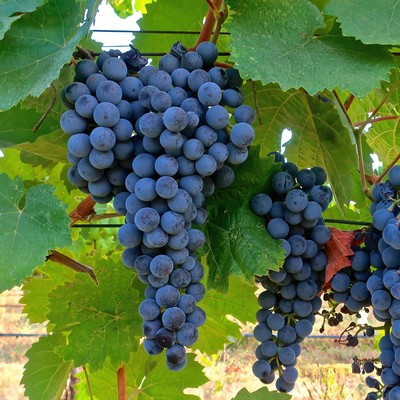
Dornfelder, one of the more unusual grapes grown in Lodi utilized for both deep-colored reds and refreshingly dry rosés.
Dornfelder
• Dornfelder is a German crossing that yields grapes of extremely dark color and sturdy tannin when vinified into red wine in Lodi; as a rosé, however, it falls on the light and delicate side (primarily because it is picked lower in sugar than most varieties), exuberant in natural acidity and exceptionally aromatic (cherry, rose petal, a touch of tropical fruit such as guava).
• Key producer: Hatton Daniels Wine Cellars
Pinotage
• Pinotage is another grape variety qualifying as "off-beat"—a South African crossing of Pinot noir and Cinsaut (rarely seen in California) that has proven to have an easy affinity with Lodi's Mediterranean climate, producing ripe if somewhat herby wines; when picked early enough in the season for rosé, it retains an understated yet fresh, floral red berryish (pomegranate, cranberry) fragrance.
• Key producer: Intercoastal Vineyards
